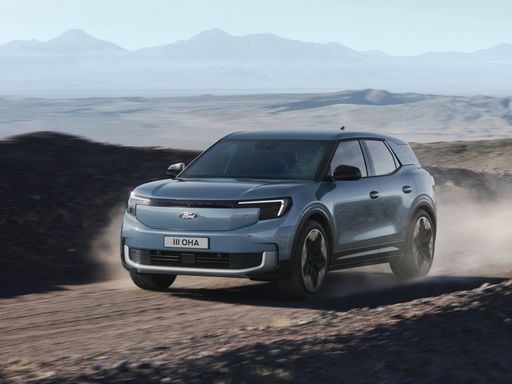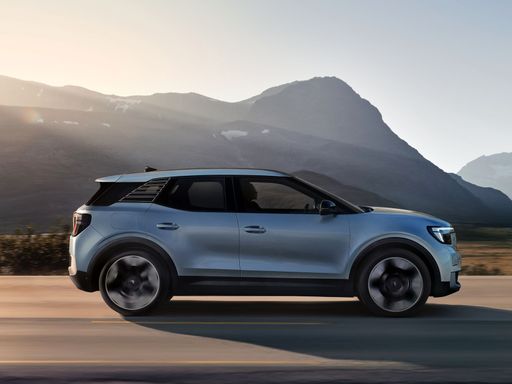Ford Explorer EV vs Hongqi E-HS9 – Differences & prices compared
Everyday use, family trips or long-distance drives – here’s where the differences show.
Discover whether Ford Explorer EV or Hongqi E-HS9 fits your lifestyle better.
Costs and Efficiency:
Price and efficiency are often the first things buyers look at. Here it becomes clear which model has the long-term edge – whether at the pump, the plug, or in purchase price.
Ford Explorer EV has a clearly advantage in terms of price – it starts at 34200 £, while the Hongqi E-HS9 costs 68600 £. That’s a price difference of around 34367 £.
In terms of energy consumption, the advantage goes to the Ford Explorer EV: with 14.50 kWh per 100 km, it’s noticeable more efficient than the Hongqi E-HS9 with 19.40 kWh. That’s a difference of about 4.90 kWh.
As for range, the Ford Explorer EV performs somewhat better – achieving up to 602 km, about 87 km more than the Hongqi E-HS9.
Engine and Performance:
Power, torque and acceleration say a lot about how a car feels on the road. This is where you see which model delivers more driving dynamics.
When it comes to engine power, the Hongqi E-HS9 has a clearly perceptible edge – offering 551 HP compared to 340 HP. That’s roughly 211 HP more horsepower.
In acceleration from 0 to 100 km/h, the Hongqi E-HS9 is minimal quicker – completing the sprint in 4.90 s, while the Ford Explorer EV takes 5.30 s. That’s about 0.40 s faster.
In terms of top speed, the Hongqi E-HS9 performs slight better – reaching 200 km/h, while the Ford Explorer EV tops out at 180 km/h. The difference is around 20 km/h.
There’s also a difference in torque: Ford Explorer EV pulls barely noticeable stronger with 679 Nm compared to 670 Nm. That’s about 9 Nm difference.
Space and Everyday Use:
Beyond pure performance, interior space and usability matter most in daily life. This is where you see which car is more practical and versatile.
Seats: Hongqi E-HS9 offers evident more seating capacity – 7 vs 5.
In curb weight, Ford Explorer EV is significantly lighter – 1908 kg compared to 2705 kg. The difference is around 797 kg.
In terms of boot space, the Ford Explorer EV offers significantly more room – 450 L compared to 0 L. That’s a difference of about 450 L.
When it comes to payload, Ford Explorer EV somewhat takes the win – 585 kg compared to 475 kg. That’s a difference of about 110 kg.
Who wins the race?
The Ford Explorer EV proves to be is largely superior and therefore becomes our DriveDuel Champion!
Ford Explorer EV is the better all-rounder in this comparison.
 @ Ford Motor Company / Ford Media Center
@ Ford Motor Company / Ford Media Center
Ford Explorer EV
Ford Explorer EV
The Ford Explorer EV marks a significant step forward in the brand's journey towards electrification, offering an impressive blend of performance and sustainability. This modern SUV features a sleek design complemented by advanced technology that enhances the driving experience. With a focus on comfort and innovation, the Explorer EV aims to redefine family travel for the electric age.
details @ Ford Motor Company / Ford Media Center
@ Ford Motor Company / Ford Media Center
 @ Ford Motor Company / Ford Media Center
@ Ford Motor Company / Ford Media Center
 @ Ford Motor Company / Ford Media Center
@ Ford Motor Company / Ford Media Center
Hongqi E-HS9
The Hongqi E-HS9 embodies a seamless blend of elegance and electric innovation, marking a bold entry into the luxury SUV market. Its sleek design exudes a certain majestic presence, while the spacious interior is adorned with premium materials, offering a truly luxurious driving experience. Advanced technology integrated throughout ensures a ride that is not only smooth but also efficiently powered, setting new standards for modern electric vehicles.
details
 @ Ford Motor Company / Ford Media Center
@ Ford Motor Company / Ford Media Center
|
|
|
|
|
Costs and Consumption |
|
|---|---|
|
Price
34200 - 48800 £
|
Price
68600 - 88300 £
|
|
Consumption L/100km
-
|
Consumption L/100km
-
|
|
Consumption kWh/100km
14.5 - 17.2 kWh
|
Consumption kWh/100km
19.40 kWh
|
|
Electric Range
360 - 602 km
|
Electric Range
465 - 515 km
|
|
Battery Capacity
52 - 79 kWh
|
Battery Capacity
90 - 111 kWh
|
|
co2
0 g/km
|
co2
0 g/km
|
|
Fuel tank capacity
-
|
Fuel tank capacity
-
|
Dimensions and Body |
|
|---|---|
|
Body Type
SUV
|
Body Type
SUV
|
|
Seats
5
|
Seats
6 - 7
|
|
Doors
5
|
Doors
5
|
|
Curb weight
1908 - 2179 kg
|
Curb weight
2705 - 2777 kg
|
|
Trunk capacity
445 - 450 L
|
Trunk capacity
0 L
|
|
Length
4468 mm
|
Length
5209 mm
|
|
Width
1871 mm
|
Width
2010 mm
|
|
Height
1630 - 1639 mm
|
Height
1713 - 1731 mm
|
|
Max trunk capacity
1417 - 1422 L
|
Max trunk capacity
-
|
|
Payload
561 - 585 kg
|
Payload
455 - 475 kg
|
Engine and Performance |
|
|---|---|
|
Engine Type
Electric
|
Engine Type
Electric
|
|
Transmission
Automatic
|
Transmission
Automatic
|
|
Transmission Detail
Reduction Gearbox
|
Transmission Detail
Reduction Gearbox
|
|
Drive Type
Rear-Wheel Drive, All-Wheel Drive
|
Drive Type
All-Wheel Drive
|
|
Power HP
170 - 340 HP
|
Power HP
551 HP
|
|
Acceleration 0-100km/h
5.3 - 8.7 s
|
Acceleration 0-100km/h
4.90 s
|
|
Max Speed
160 - 180 km/h
|
Max Speed
200 km/h
|
|
Torque
310 - 679 Nm
|
Torque
670 Nm
|
|
Number of Cylinders
-
|
Number of Cylinders
-
|
|
Power kW
125 - 250 kW
|
Power kW
405 kW
|
|
Engine capacity
-
|
Engine capacity
-
|
General |
|
|---|---|
|
Model Year
2024 - 2025
|
Model Year
2024
|
|
CO2 Efficiency Class
A
|
CO2 Efficiency Class
A
|
|
Brand
Ford
|
Brand
Hongqi
|
What drive types are available for the Ford Explorer EV?
The Ford Explorer EV is available as Rear-Wheel Drive or All-Wheel Drive.
The prices and data displayed are estimates based on German list prices and may vary by country. This information is not legally binding.
